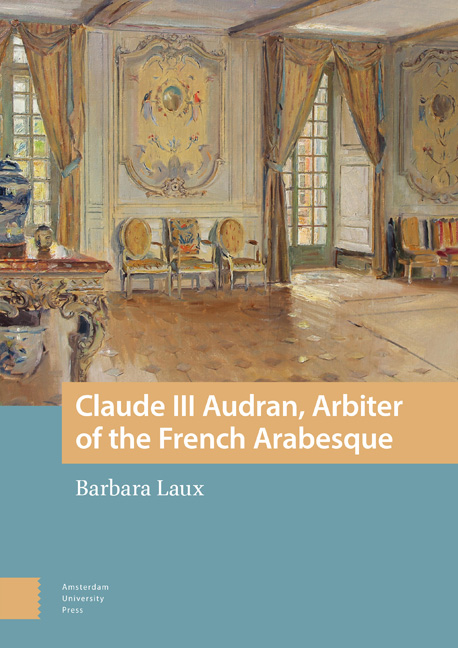Book contents
- Frontmatter
- Contents
- List of Illustrations
- Acknowledgements
- Introduction
- 1 Biography of Claude III Audran (1658–1734)
- 2 The French Arabesque as an Art Form, Audran as Master Ornamentalist , and His Initial Commissioned Works
- 3 Claude III Audran and Jean de La Fontaine’s Fables: Maintaining the Social Hierarchy
- 4 Attracting New Patrons in the Eighteenth Century
- 5 Claude III Audran’s Competitors and His Legacies
- Color Plates
- Appendix
- Bibliography
- Index
3 - Claude III Audran and Jean de La Fontaine’s Fables: Maintaining the Social Hierarchy
Published online by Cambridge University Press: 08 May 2024
- Frontmatter
- Contents
- List of Illustrations
- Acknowledgements
- Introduction
- 1 Biography of Claude III Audran (1658–1734)
- 2 The French Arabesque as an Art Form, Audran as Master Ornamentalist , and His Initial Commissioned Works
- 3 Claude III Audran and Jean de La Fontaine’s Fables: Maintaining the Social Hierarchy
- 4 Attracting New Patrons in the Eighteenth Century
- 5 Claude III Audran’s Competitors and His Legacies
- Color Plates
- Appendix
- Bibliography
- Index
Summary
Abstract
When the crown ordered the renovation of the Ménagerie at Versailles, Jules Hardouin-Mansart (1646–1708) tapped Audran to complete the interior design. The concepts of convenance and bienséance provide historical context to explain Audran's use of La Fontaine's Fables motifs and other design elements in the interiors. The design motifs coordinated with custom decorative arts set a precedent for elite interiors. Analysis of these motifs shows how they relate to the status and position of Marie-Adélaïde. Audran's subsequent commission at the château Sceaux includes the discussion of painted harpsichords and harpsichord music. In addition, a later commission for Audran from the architect Jules-Robert de Cotte (1683–1767) at his Château de Réveillon represents the second project to illustrate La Fontaine Fables.
Keywords: La Fontaine; Fables; Ménagerie; Convenance; Bienséance; Château de Réveillon
When reference is made to Audran's accomplishments, especially the reason for his long career, his success is attributed to the use of motifs drawn from popular culture. The catalyst for this generic hybridization began in 1699 when Louis XIV commissioned the renovation of a small chateau on the grounds of the Ménagerie at Versailles. In this chapter, a discussion of the significance of La Fontaine's Fables, as well as other elements from popular culture, as they were first used by Audran in his arabesque designs, is followed by an analysis of Audran's 1732 commission, for which he drew from the Fables to illustrate painted panels at the Château de Réveillon. This commission represents the only known example of Audran's reuse of a theme and how its significance had changed. By comparison, these two commissions serve to inform us about the significance assigned to these elements in Audran's arabesque designs. They also can be seen as metaphorical bookends of Audran's career: the early commission at the Ménagerie and the commission at Réveillon, one of his last.
At the time of Audran's first commission, in 1699, Louis XIV's absolute monarchy had been established for almost forty years. During that time, the fine arts and decorative arts had been organized and were flourishing under the administration of Jean-Baptiste Colbert (continuing even after his death in 1683).
- Type
- Chapter
- Information
- Claude III Audran, Arbiter of the French Arabesque , pp. 101 - 146Publisher: Amsterdam University PressPrint publication year: 2024

